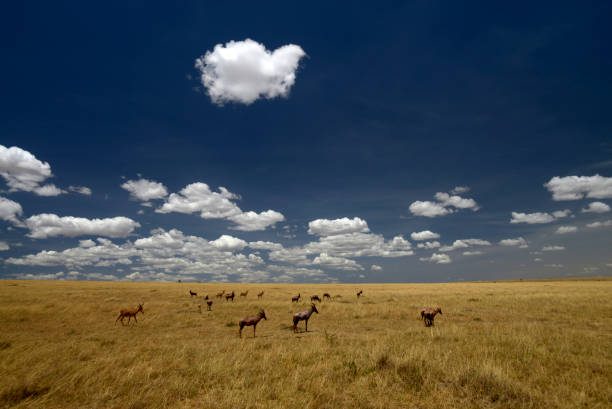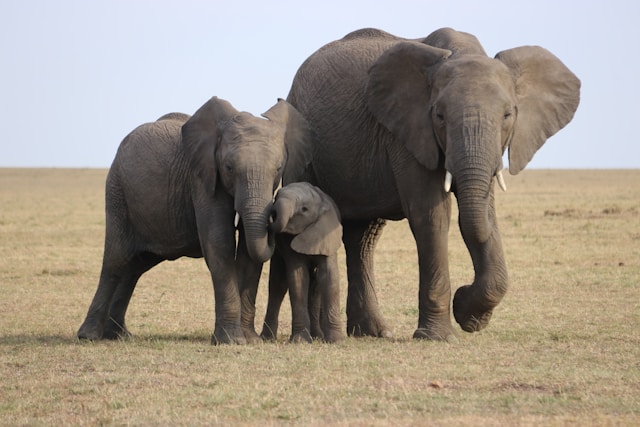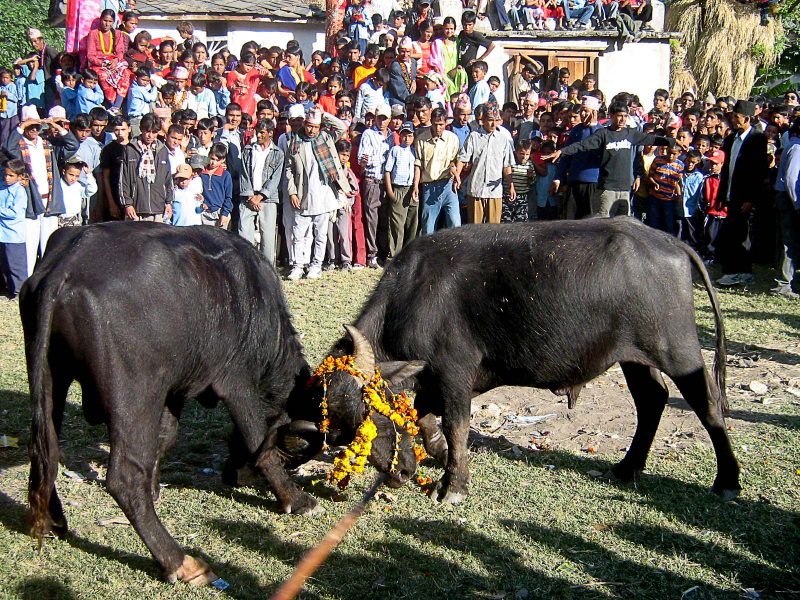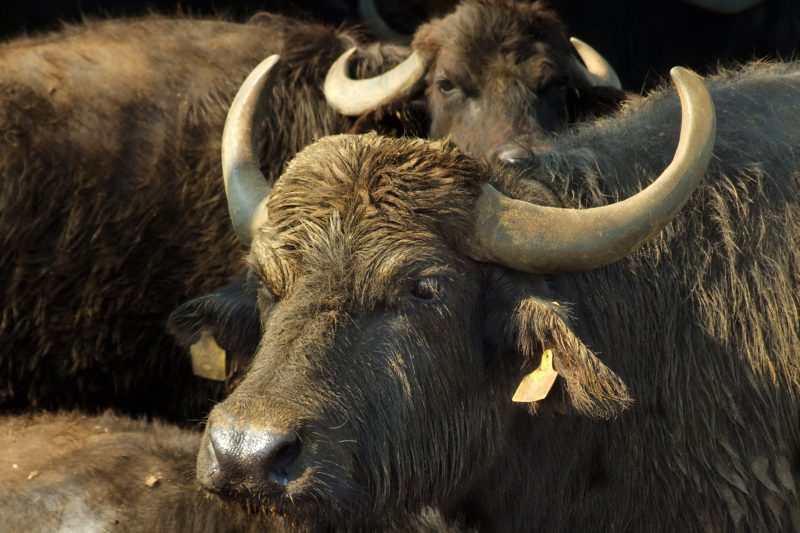Suni, Oribi, And Duiker Of Kenya
Suni of Kenya
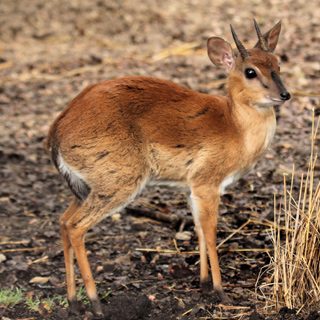
Suni
With long, slender legs, Suni is a small antelope with thin built and relatively high hindquarters. Horns are short, spike-like, heavily ridged, wideset, black, and are in line with the face, but only male Suni have them.
Small colorful antelope
The body colour of a suni varies between individuals from rufous to grizzled tan-brown, with the inside surfaces of the legs and the belly being white. It has a speckled appearance that ranges from gray to rich chestnut color with a reddish tinge. The lateral sides of its body are pale. The brown head tapers sharply to a point at the muzzle. The tail is dark above and white underneath. The underparts, the chin, the insides of the legs, and the throat, are white as well. The rounded, big and thin-skinned ears appear bright pink in sunlight. The eye has a pale ring, and each leg has a ring of the black band above the hoof.
Mark my territory
In front of the eyes, a suni has long preorbital glands, which features prominently in grown-up males. A pungent smell originates from their preorbital glands. They mark their ranges with secretions from these large preorbital glands and also with dung middens. Well-trodden pathways run through each of their home range.
Constantly active antelope
A suni is busy throughout the day and night. However, they tend to be more active during dusk and dawn, as well as overnight. They are sensitive to predators. They typically freeze in position if a threat is detected. Males appear to be territorial, overlapping their areas with that of the females. There are no firm bonds between the genders. They use their sleeping spots very frequently.
Oribi of Kenya
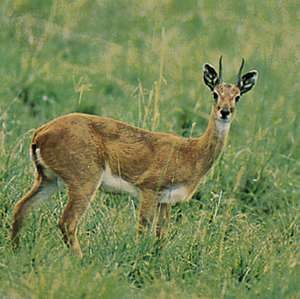
The oribi is the only small antelope and perhaps the smallest ruminant
The oribi is the only small antelope and perhaps the smallest ruminant. It lives in small herds or pairs. The oribi has a slender body and is long-necked and long-limbed. It weighs about 14 kg and stands 76 cm high. The males have spike-like horns. Some oribis may gather on neutral ground.
Short, colorful antelope
The oribi’s color differs from one location to another. The coat is tan to reddish brown. Its underparts, rump, ear insides, and throat are white. It has a stubby black tail. There is a white line over each eye and a black glandular spot below each ear.
Fine appetizing cuisine
The oribi is dependent on high grass for cover and food, limiting its geographic range to more upper regions. When palatable green grass is unavailable, it eats foliage, forbs, and herbs. It derives enough water from its metabolic content in its stomach to be water-independent. They leave their territories to visit lawns of short grass, and mineral licks created by larger ruminants as well as post-burn flushes of vegetation during summer. When fires remove all cover, herds of up to twelve form, but lacking the cohesion of other species, the members scatter when put to flight. When flushed they run away in a zigzag manner.
Both gender characteristics
Females tend to grow slightly larger than males. Both males and females defend territories against same-gender strangers and demarcate property with dung middens. The male spends much of his time marking and patrolling the territory’s boundaries. Family members communicate using the odors from their scent glands and with different versions of the whistling alarm snort.
Traditional family structure
Although oribis live in conventional mated pairs, polygamous variations on the monogamous territorial theme do exist. Half of oribi territories may include two or more families.
Birth of newborns
Oribis give birth mostly during the rainy season. Newborns are dark and remain hidden. But they develop very rapidly, reaching the size of an adult by one year.
Duiker of Kenya
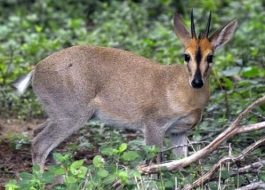
There exist 21 species of Duiker
Duiker is a small antelope that lives in the forest or the bushy areas of Kenya. There exist 21 species of them, which include the Red Duiker, the Blue Duiker, the Ader’s Duiker and the Bush Duiker. They are the most common antelopes. They occur mainly in the Shimba Hills Reserve during the afternoon and into the night. The lifespan of a duiker is 12 years.
Food for body
Duikers feed on leaves, fruits, seeds, and flowers. From time to time they eat insects, lizards, small rodents, and birds. The duiker has an arched, slender body, large ears, long hind legs with shorter front legs and is lighter in color. Their underparts are white and have a black band near their nostrils.
Different gender characteristics
The male duiker has small horns, but the female duiker does not have horns. The males stand at 50 cm and reach 18 kg while the females are 20 mm taller and weigh 21 kg. Male duikers often fight and are very territorial, chasing away strangers of the same sex, especially when they invade their zones. They live in small territories, marked with their secretions. Males and females share regions and come together when they mate. They spend their time grooming each other’s heads. Duiker courtship involves noisy and prolonged chases in the area before mating. The gestation period of the female is six months. A calf runs within hours of being born, but it tends to spend time lying hidden within foliage.
Predators
The predators of duikers are all carnivores. The duiker avoids its predators by lying motionless and quietly and then dashing away at the nick of time. They duck and dive into the bushes when in danger. It runs in a zigzag shape and uses its horns and black hooves as a defense. To warn others to danger, they issue a snort and, if caught, they bleat, attracting others to help.
5 Frequently asked questions about small herbivores of Kenya
To receive a colourful digibook about animals with videos, images and text, please fill out the following form or simply email us on safaris@safari-center.com

